Surviving the storm: What happens after the trees come down?
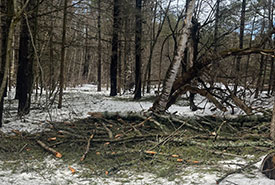
Downed trees in Gillies Grove after the freezing rain thunderstorm in spring 2023 (Photo by NCC)
Whenever we experience a big storm in eastern Ontario, my thoughts turn to the Gillies Grove Nature Reserve. Home to some of the last remaining old-growth forest in eastern Ontario, this Nature Conservancy of Canada (NCC) project is considered...
My nature love story (Reflections on the eve of COP15)
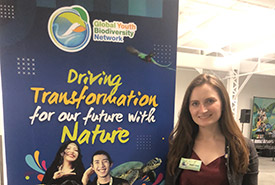
Megan at Global Youth Biodiversity Network’s Youth Summit (Photo by NCC)
As delegates from around the world gather for the 15th meeting of the Conference of the Parties to the UN Convention on Biological Diversity, also known as COP15, there’s a lot happening in Montreal. I’m fortunate to be attending COP15...
SFI Conference Green Mentor Program sets the right example
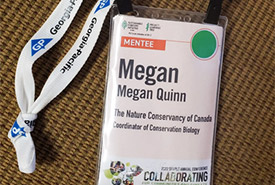
For many mentees, the 2022 SFI/PLT Annual Conference wasn’t just a chance to meet their mentor in person, but to also hear them speak in conference sessions. (Photo by NCC)
In June 2022, the Sustainable Forestry Initiative (SFI) and its award-winning educational program Project Learning Tree (PLT) came together in Madison, Wisconsin, for a joint conference. The annual conference’s theme was...
Between two ears: How horse riding makes me a better conservation biologist
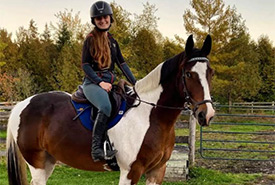
Spending time with Vegas is the best part of Megan's day (Photo by Megan Quinn/NCC staff)
There is no one single way to enjoy time in nature. Some people like to go on multi-day wilderness camping trips and fully immerse themselves in the forest, while others enjoy sitting under a tree and reading a book. A person’s connection to...
Getting bogged down
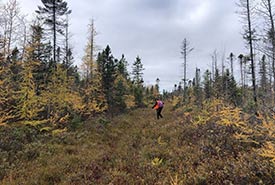
Megan Quinn leading the field team through the Alfred Bog (Photo by NCC)
It’s easy for me to get to most of the Nature Conservancy of Canada’s (NCC) properties in eastern Ontario. I load up the driving directions on my phone, and the GPS takes me right to the trailhead. I might have a strenuous hike when I...
A thank you letter to the young professionals of conservation
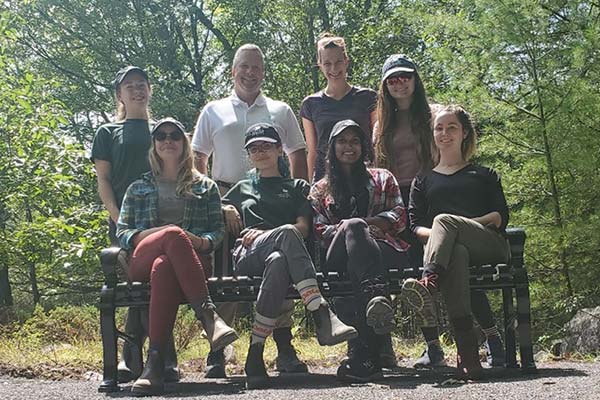
The 2021 eastern Ontario team at Elbow Lake, ON (Photo by NCC)
Spring is one of the best times to be a conservation biologist with the Nature Conservancy of Canada (NCC). I get to dust off my field boots, turn off my laptop and get back outside. There is a beautiful rhythm to resuming field work, and my to-do...
Blanding’s turtle: A lesson about life in the slow lane
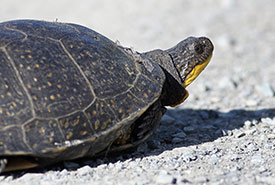
Blanding's turtle at Emma Young Property, Frontenac Arch, ON (Photo by Mike Dembeck)
I think many of us need a reminder to slow down. With a ground speed maxing out at only a few kilometres per hour, the only option for a Blanding’s turtle is slow. Although it takes them a long time to travel throughout their extensive home...
Reflections, roundtables and royalty: Thoughts from attending the IUCN Global Youth Summit
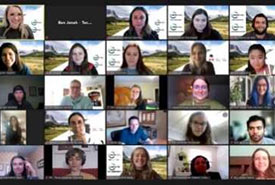
A group photo of one session during the IUCN Youth Summit
There are not many reasons I will willingly get out of bed at 5:30 a.m., but the opportunity to make a real difference in the world is one of them. Recently, I gathered with 13,000 fellow young people from across the globe at the International...
What does a conservation biologist do in the “other season?”

Is this what you think of when you hear conservation biology? ( Photo by Mike Dembeck)
There is a seasonal nuance to being a conservation biologist. If you look at my job description optimistically, my job involves afternoons looking for spring ephemeral flowers, summers canoeing on lakes and early autumn mornings catching the last...
So you’ve acquired a property. Now what? (part two)
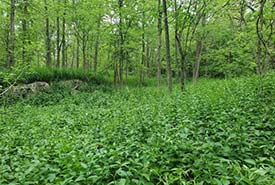
Invasive dog-strangling vine (Photo by NCC)
In my previous blog, I defined the term baseline inventory, described the behind-the-scenes planning stages, and laid out how we classify vegetation communities on the ground. Read on to find out what other important data we collect in the field,...

